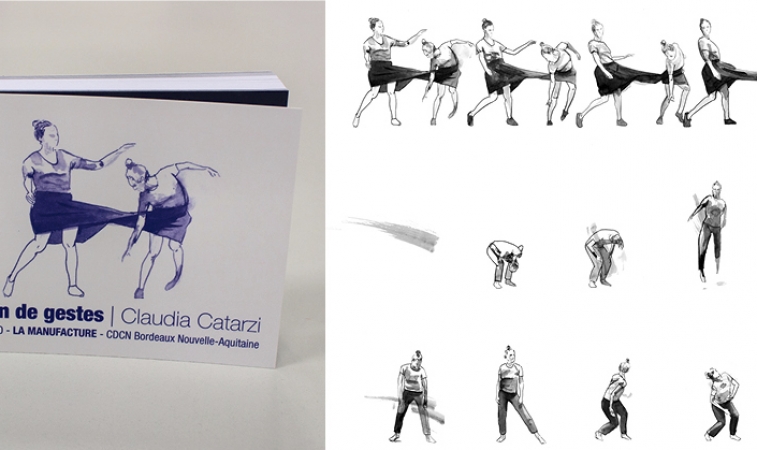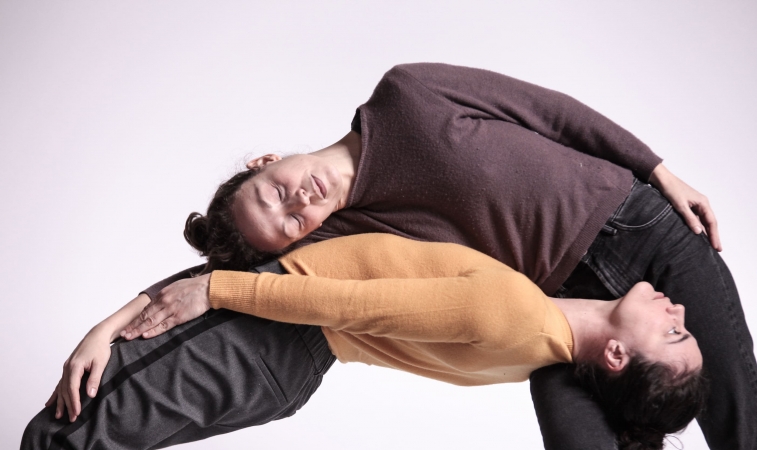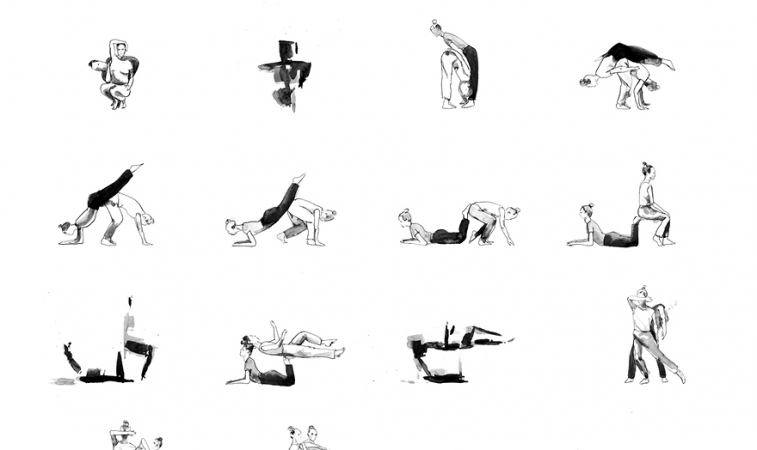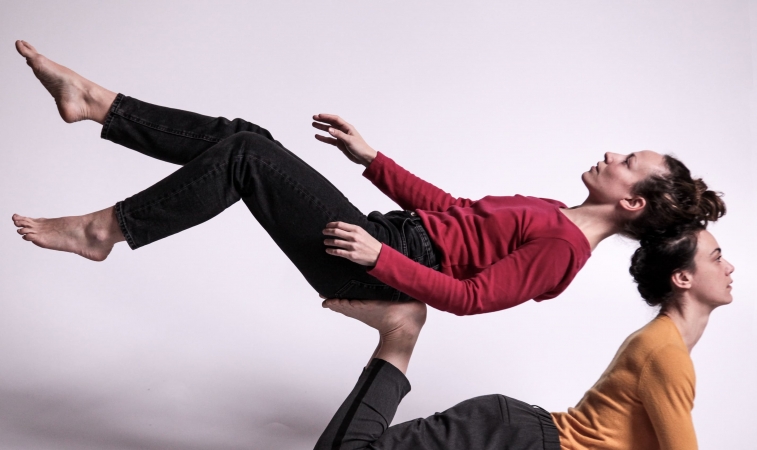Posare il tempo
produzione / production La Manufacture – Centre de Développement Chorégraphique National Bordeaux Nouvelle-Aquitaine, in coproduzione con/ in coproduction with La Briqueterie – Centre de Développement Chorégraphique National du Val-de-Marne, POLE-SUD - Centre de Développement Chorégraphique National / Strasbourg, Art Danse – Centre de Développement Chorégraphique National Dijon Bourgogne, Centre Chorégraphique National Malandain Ballet Biarritz, Le réseau Tremplin: Danse à tous les étages - Bretagne, L'Etoile du Nord - Paris, Le Mac Orlan - Brest, Le Triangle - Rennes, Chorège - Falaise, Centre Chorégraphique National de Nantes; CANGO Centro Nazionale di Produzione sui linguaggi del corpo e della danza/ Firenze, Company Blu con il contributo di MIBACT e Regione Toscana, Zebra | Cultural Zoo
e con il sostegno di / with the support of Glob Théâtre/ Bordeaux, SPAM!/ Porcari, Teatro Era / Pontedera, Armunia / Castiglioncello, Le Murate / Firenze, Centro arte contemporanea | Museo Pecci (Prato)
© Luca Hosseini
© Luca Hosseini
progetto e coreografia / concept and coreography Claudia Catarzi
danza/ dance Claudia Caldarano, Claudia Catarzi
percussioni live/ live percussion Gianni Maestrucci
drammaturgia/ dramaturgy Amina Amici
musiche originali e drammaturgia sonora / original music and sound dramaturgy Bruno De Franceschi
sound design Francesco Taddei
disegno luci/ light design Massimiliano Calvetti, Leonardo Bucalossi
durata/ duration 55 minutes
english version below
Questo lavoro nasce da una condizione immaginata. È una declinazione della visione, a volte un tentativo di simultaneità di tempi e spazi.
Ciò che in natura e in scienza non si può avere, è una forte attrattiva per chi ama maneggiare strumenti utili per l'assurdo, per l'eccezionale.
La materia prima sono due corpi, due elementi dell'ordinario, due persone, due ritratti, due entità scultoree, due frammenti, due e, a volte, un unico. Come creta nelle mani di uno scultore i due corpi sono a servizio di questo esperimento, dello stare e restare e del posare, della trasformazione.
Posiamo per essere guardarti e posiamo il nostro peso, ineluttabilmente sottostiamo alle leggi fisiche della gravità e misteriosamente parliamo senza parole con i nostri corpi, raccontando storie non udibili.
Posare il tempo invita ciascuno spettatore a lasciare da parte il suo insaziabile bisogno di comprendere.
Ce travail naît d'une condition imaginée, c'est une déclinaison de la vision, parfois une tentative de simultanéité des temps et des espaces. Ce que on ne peux pas avoir dans la nature et la science est une forte attraction pour ceux qui aiment manipuler des outils utiles pour l'absurde, pour l'exceptionnel.
La matière première sont deux corps, deux éléments de l'ordinaire, deux personnes, deux portraits, deux entités sculpturales, deux fragments, deux et parfois « un unique ». Comme argile entre les mains d'un sculpteur, les deux corps sont au service de cette expérience, de l'être et rester et du poser, de la transformation.
Nous posons pour être regardés et posons notre poids, inéluctablement nous sommes soumis aux lois physiques de la gravité et mystérieusement nous parlons sans mots avec nos corps, toujours.
Posare il tempo invite chaque spectateur à laisser de côté son insatiable besoin de comprendre.
The work stems from an imagined condition. It is a declination of the vision, sometimes an attempt to simultaneity of times and speaces.
What you cannot have in nature and science is a strong attraction for those who like to handle usefuls tools for the abusrd, for the exeptional.
The raw materials are two bodies, two ordinary elements, two people, two portraits, two sculptural entities, two fragments,two and sometimes a single one. Like clay in the hands of a sculptor, the two bodies are at the service of the experiment, of staying and remaining and posing, of transformation.
We pose to be looked at, and we pose our weight. Inevitably we are subject to the physical laws of gravity and mysteriously we speak without words with our bodies, telling inaudible stories.
Posare il tempo invietes viewers to leave aside their insatiable need to understand.
english version below
Press review
Firenze – Spettacolo sofisticato e di grande impatto.
Posare il tempo per la danzatrice, coreografa e artista formatasi all’Accademia di Belle Arti di Firenze, significa prima di tutto creare sculture con i corpi: le danzatrici posano in tante diverse forme plastiche in uno spazio che si fa tempo nello svolgersi della perfomance.
Posare significa anche equilibrare i volumi del corpo posandoli l’uno sull’altro, rispettando e valorizzando le rispettive gravità, ma non vi aspettate una sorta di “quadri di un’esposizione”. Anche se l’autrice invita a non lasciarsi troppo andare all’immaginazione al di là del suo programma artistico, quando entra in gioco la variabile tempo è inevitabile che si racconti una storia che ha un inizio e una fine. Almeno è inevitabile che il pubblico la senta come tale e cerchi di individuarne l’intimo significato.
Ma quale è allora la storia che le due danzatrici, Claudia Catarzi e Claudia Caldarano hanno raccontato? O almeno quale percezione può aver avuto il pubblico di questa narrazione? E’ un coinvolgente gioco di limite e di libertà, entrambi momenti essenziali dell’espressione del proprio sentire individuale.
E’ la ricerca (felice e angosciosa nello stesso tempo) di porre in un quadro definito l’infinita varietà del gesto e del movimento. Ai momenti di liberazione del corpo in uno spazio senza confini, segue il tentativo di costringere questa esplosione in un frame, una cornice che definisce l’identità dell’individuo grazie al rapporto con l’altro e dà un senso all’estenuante impegno del vivere.
Per questa alternanza fra statica e dinamica, fra energia trattenuta e significante e libera fisicità, la coreografa ha utilizzato uno schermo mobile flessibile che si confonde con il grande tappeto bianco della scena, scompare e riappare. Un attrezzo che permette alle protagoniste di strutturare e destrutturare le loro composizioni artistiche e a mettere in scena l’eterna contraddittoria dialettica fra l’io e l’altro.
Piero Meucci, STAMP toscana, 29 ottobre 2018
Firenze - Sophisticated and impressive show.
Posare il tempo for the dancer, choreographer and artist trained at the Accademia di Belle Arti in Florence, means first of all creating sculptures with bodies: the dancers pose in many different plastic forms in a space that becomes “time” while the performance unfolds.
Posing also means balancing the body's volumes by placing them one on top of the other, respecting and valuing their respective gravities, but do not expect a sort of " paintings in an exhibition ". Even if the authoress invites you not to let yourself go too far with your imagination beyond her artistic program (she did this in an unusual and interesting meeting with the audience at the end of the show), when the time variable comes into play it is inevitable that you tell a story that has a beginning and an end. At least it is inevitable that the public feels it as such and tries to identify its intimate meaning.
So what is the story that the two dancers, Claudia Catarzi and Claudia Caldarano have told? Or at least what perception may the audience have had of this narrative? It is an engaging game of limitation and freedom, both essential moments of the expression of one's own individual feelings.
It is the search (happy and agonizing at the same time) to place within a defined framework the infinite variety of gesture and movement. There are moments of liberation of the body in a space without borders, then the attempt to force this explosion into a frame, a frame that defines the identity of the individual thanks to the relationship with the other and gives a sense to the exhausting commitment of living.
For this alternation between static and dynamic, between restrained and significant energy and free physicality, the choreographer has used a flexible mobile screen that merges with the large white carpet of the scene, disappears and reappears. A tool that allows the protagonists to structure and deconstruct their artistic compositions and to stage the eternal dialectic contradiction between the self and the other.
Piero Meucci, STAMP toscana, 29 ottobre 2018



